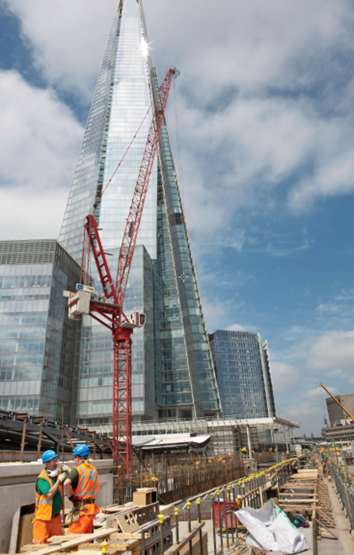 Read the peer reviews for this feature
Read the peer reviews for this feature
Ask ten people what defines an efficient railway and you’ll receive a dozen answers… at least!
At its heart, efficiency is a relationship between inputs and outputs. Those inputs are generally time or money, whereas outputs are many and varied. You might measure punctuality or customer satisfaction. You might measure capacity used and compare it with capacity available. But even capacity is open to debate - do you measure it in terms of trains or seats? Or for freight, container spaces or wagon capacity?
A view of railway efficiency depends enormously on viewpoint - what matters to one person may not matter to another. Passengers might measure rail in terms of value for money. So might governments, but what represents good value to one might not be good value to another.
Nowhere is this better illustrated than today’s debate over fares. In the past few years the Government has raised those fares under its control by more than inflation, as it continues a policy of shifting the burden of rail away from taxpayers and more towards passengers.
Rail efficiency can be further divided. Users generally concentrate on efficient operation, but there is also efficiency in delivering maintenance, renewals and enhancements. Here Network Rail is under constant pressure from the Office of Rail and Road to become more efficient - to deliver as much (or more) work for a lower or similar cost.
NR has made progress in this area, yet its funding appears to be ever-rising. Increasing efficiency in one area may be masked by rising costs elsewhere. Yet those parts with rising costs could still be efficient, because their budgets may have been set with too much optimism or too early to properly know what costs were involved.
That was evident from ORR’s decision in 2013 to subject NR enhancements to a process called ECAM (Enhancements Cost Adjustments Mechanism). This took a project, checked its figures before and after delivery, and then allowed NR to add the efficient cost to the regulatory asset base against which NR could borrow money. This process derailed when NR was reclassified as a public body and no longer allowed to borrow money from private markets.
Part of ORR’s ECAM process was to compare NR’s costs with others. It’s tempting to compare efficiency levels between companies, but this is fraught with difficulties - you have to be sure that you’re comparing like with like. This was one of the challenges Sir Roy McNulty faced in his 2011 report, which concluded that Britain’s railways were 30% more costly in unit terms and could reduce by this much by 2018-19.
McNulty compared Britain with France, the Netherlands, Sweden and Switzerland. He found that NR’s costs were a significant part of the gap, but also that train operator and rolling stock costs were higher than they might be because of Britain’s lower level of train use in terms of passenger-kilometres per train kilometre (see graph, page 56, which shows a gradual improvement for Britain).
France, for example, does well in that latter category by running high-capacity TGV trains on high-speed, long-distance services and making sure they are full. Demand can be concentrated by running as few trains as possible, whereas Britain runs frequent services on some long-distance routes. Trains from London Euston to Manchester run every 20 minutes, whereas Paris-Lyon’s TGV service is roughly hourly. Both journeys take around two hours. Running fewer trains helps each train load more efficiently, but reduces track efficiency in terms of loaded trains per track mile.
If Paris-Lyon demand grows, SNCF could respond by increasing frequencies if it has spare stock. But if it does, this means that it’s currently using its fleet inefficiently compared with Britain’s intensively-worked London-Manchester trains.
SNCF and London-Manchester operator Virgin Trains take different views on their business models and on what efficiency means, which makes comparing the two very difficult. Virgin uses heavily discounted fares to attract passengers to quieter trains at less convenient times, but while demand lags behind supply (as it must if there are empty seats), then this means a less efficient operation than might otherwise be possible.
Comparing UK operators with each other is similarly prone to pitfalls. The first to avoid is any assumption that one operator is like another. Take Virgin Trains again (its West Coast operation). Dividing passenger-kilometres by its staff costs gives a measure of how much it delivers per pound of staff costs (see table, page 60). Using 2015-16 accounts, this gives a result of 39.14. Do the same for East Midlands Trains and the result is 24.83. For Great Western Railway it’s 18.78.
From this you could conclude that Virgin is the most efficient of the three. But it runs far fewer trains so needs fewer drivers and guards when compared with GWR and EMT, both of which run quieter rural and regional routes using short trains in addition to their inter-city routes. Also, GWR maintains its trains using its own staff. Alstom maintains the trains that Virgin leases from Angel Trains, so those staff costs appear under a different heading and cannot easily be found.
Of more relevance would be to compare the same company in different years, which could show whether a company is becoming more or less efficient. Using 2014-15’s accounts, Virgin rates 40.79, EMT 25.52 and GWR 20.34. So according to this measure, all have become less efficient over the year.
However, it’s not as bad as it looks, because these figures are not adjusted for inflation over the year. Converting 2014-15’s financial figures into their equivalents for 2015-16 gives VT 40.38, EMT 25.27 and GWR 20.14.
Imagine another operator has similar figures, but has a franchise commitment that reflects a Department for Transport requirement for all its stations to be staffed from first train to last train. Many of its stations do not currently have full-time staff, and so the switch will sharply worsen its passenger-kilometre figures per staff pound. But this cannot be seen as becoming less efficient on its own terms - in strict terms it is less efficient, but the extra staff may well contribute to a reduction in complaints. This is another measure that could be used to judge efficiency (when set against the number of passenger journeys).
Equally, an operator could shed staff. This could make it look more efficient, up until the point at which the loss of the work those staff members were doing begins to affect the business.
If you want a railway to support a country’s economy, you should not expect to hold it accountable for not being cost-effective. The DfT is mandating capacity improvements in London and South East England while holding season ticket prices down. This increases the railway’s overall costs while holding its income steady, which makes it less cost-effective.
British Rail used a variety of measures to gauge efficiency: passenger miles per member of staff employed; net tonne miles per member of staff employed; passenger-miles per loaded passenger train-mile; net tonne-miles per wagon; loaded train-miles per total route mile and average wagon load.
Such measures are rarely reported today. Instead, NR reports a bewildering array of statistics, of which only one mentions efficiency (see chart, page 62). This is a financial performance measure which shows “total efficiency generated excluding enhancement”. For Q2 of 2016-17 this was -£10m, with NR predicting full-year efficiency gains of -£180m.
Comparing (or benchmarking) one railway with another is very difficult because of the challenge of eliminating the inherent differences between those railways. In an International Transport Forum paper about railway efficiency written in 2013, Civity Management Consultants Arne Beck, Heiner Bente and Martin Schilling say: “Each nation and railway is subject to unique characteristics that will undoubtedly impact efficiency. For one, a nation’s history has shaped the organisational structure of the railway as well as the physical network. Subsidies for rail and annual deficits may be acceptable in some nations and not in others.
“Wars and its repercussions have impacted rail infrastructure. Topography is another factor. Switzerland and Japan both are nations with high concentrations of mountainous terrain, which makes the construction and maintenance of infrastructure more expensive. Settling patterns and population density also impact efficiency and utilisation of trains. France, Sweden and Canada all have low population densities when compared with Belgium, Germany or Switzerland, which may impact utilisation of costly rail assets.”
They go on to say that benchmarking can have value in stimulating debate between railway companies about what improves and what harms efficiency. Such benchmarking formed a key part of ORR’s 2008 Periodic Review that set NR’s goals for 2009-14. It led ORR to conclude that NR was at least 35% less efficient in maintenance and renewals spending than the best of Europe.
ORR set NR efficiency improvement targets of 16% in operating spending, 18% in maintenance spending, and 24% in renewals spending - giving an overall figure of 21%. As a result, NR rewrote its policies, which led to a reduction in renewals work. It also reorganised staff, cut its fault teams and created a backlog of maintenance work. Its general reaction was to cut costs, but that is not the same as becoming more efficient because it causes outputs to decline.
NR lost ground over Control Period 4, and entered CP5 having achieved around 18%. For CP5 (2014-19), ORR proposed 19% efficiencies to NR spending with 25% in support, 17% in operations, 16% in maintenance and 20% in renewals. An ambitious plan to switch signalling control from small individual boxes to a dozen Rail Operating Centres promised savings but has not occurred as quickly as expected, while lack of access has challenged NR in achieving its expected efficiencies in renewals work.
An element of this failure comes from the flaws of benchmarking, although optimism from ORR about NR’s abilities plays a part. Nevertheless, ORR is taking benchmarking forward into CP6 (2019-24), by splitting NR’s efficiency targets into geographic routes in line with NR’s devolution plans.
This means ORR will be comparing routes that are very different, which could work provided ORR manages to neutralise those differences to arrive at valid comparisons. If it’s looking at track costs, it will need to separate the costs of track maintenance and renewals on sections of line with and without third-rail. If it’s comparing London and North Eastern with London and North Western, it will need to account for the increased spending on the latter during the West Coast Route Modernisation, compared with the LNE’s East Coast modernisation that took place in the late 1980s and early 1990s.
For all the talk about devolution helping make Britain’s railway more efficient, the Department for Transport is the body that can do most to achieve rail efficiency. If it can clearly specify what it wants from the railway and then stick to it, then NR, train operators and their contractors have the best chance of delivering.
If DfT were to keep changing its mind, or keep developing plans having already announced what it wants, then delivery would always be less efficient than it might. And current processes make it very easy for the DfT to keep changing its mind.
Every five years the DfT must announce formally what it wants from the railway. This is the High Level Output Specification, which ORR takes as the basis of its Periodic Reviews that set Network Rail’s income and spending for a five-year period.
Separately, DfT sets what it wants from train operators through its franchising process. The franchise Invitation to Tender usually sets a train service specification in terms of minimum train service and capacity requirements.
These two specification processes rarely work in synchronisation, which can mean that ORR is working to deliver one thing while bidders are working towards something else. The common players are DfT and NR, with the latter in the invidious position of being pushed by ORR to deliver what the DfT wanted a couple of years ago while at the same time being pushed by train operators to deliver what DfT wants now.
There is no better example of this than the trans-Pennine electrification project. DfT’s 2012 HLOS specified electrification of the Manchester-Huddersfield-Leeds-Colton Junction (York) route. It specified the number of morning seats to be delivered into Manchester and Leeds by 2018-19 as 34,300 and 30,500 respectively for the peak three hours. But it did not specify any linespeed or journey time improvements for the route. Nor did it specify the train service, although it included an illustrative one as a suggestion.
Fast forward three years to publication of the ITTs for the Northern and TransPennine Express franchises. Now the DfT says it wants 7,708 morning peak seats from TPE by December 2018, and 29,566 from Northern by December 2019 for Leeds. That total of 37,274 compares with the 30,500 that ORR has funded Network Rail to deliver in line with DfT’s 2012 demands. For Manchester the figures are TPE 7,285 and Northern 52,192, making a total of 59,477, compared with HLOS’s 34,300. (Further seats will be delivered by other operators, such as those running long-distance services.)
The DfT then introduced a desire for journey times of around 60 minutes between Manchester Victoria and York, taking advantage of electrification.
As a result, the trans-Pennine upgrade grew from the electrification project that DfT specified in 2012 and which was estimated at £200 million, to one that needed resignalling (another £200m) and other improvements. With funding only to deliver 2012’s HLOS, NR’s project team was placed in an impossible situation trying to deliver a much bigger project. The root cause was DfT changing its mind and pursuing a more ambitious programme that, on ORR’s funding settlement, could not be afforded.
The result? In March 2015 Secretary of State for Transport Patrick McLoughlin was forced to suspend the trans-Pennine electrification programme. That September, NR advised him to resume the plan with a possible delivery date of 2022, but there is still considerable doubt that wires will be strung along the Leeds-Huddersfield-Manchester route. Even if they are, it’s hard to see the project being able to claim it’s efficient, given the amount of money (not known, but surely millions) spent over the past few years.
Even if the revised and enlarged project offered better value for money than one that delivered HLOS’s specification, the story of this project does not shout efficiency. It speaks more of order, counter-order and disorder followed by delays and disappointment. To what extent devolution to NR’s routes will solve the problem of DfT changing its mind remains to be seen. NR now plans to present revised trans-Pennine plans at the end of this year.
Today’s railway collects a vast amount of information. Look on ORR’s data portal and you’ll see masses of it. Network Rail will have even more… so will train operators and rolling stock owners.
From this information they can plot and analyse trends, and discover the differences between actual and planned performance. This data is the lifeblood of statistical process control, and sits at the heart of process industries. From repair information, managers can see if faults are being fixed or merely the symptoms of a fault.
Take wet beds. They’re often obvious from a section of silted ballast or a distinct point at which ballast becomes covered in a light-brown slurry, formed by water contaminated with powdered ballast being pumped upwards as wheels push the track down. They are treated by digging out the ballast and replacing it with new.
However, they can be caused by a variety of track faults, which can include dipped joints, poor quality welds showing dips and humps, ballast or drainage deficiencies, loose or missing fastenings, missing rail pads or rail surface irregularities. Without fixing these problems at source, the track gang will soon be wasting their time digging out clogged ballast once more. High levels of rework point toward inefficiency.
Drivers regularly traversing a route will know whether their train’s performance matches the timetable. They may be consistently late or early at a particular point, which shows that the timetable is inconsistent or less efficient than it might be.
Lateness matters more in some places and at some times than others - late trains in peak hours will naturally delay more people than late trains at quieter times. This is why London Underground measures ‘lost customer hours’, because it’s a combination of delay and passengers. The national network should adopt this measure because it can help concentrate effort to where it will have most effect.
These measures of timetable consistency and lost customer hours both feed into an assessment of a line’s operational excellence. However, it takes staff and effort to find, collate and analyse statistics, and when money is tight it’s all too easy to cut such posts. If NR is to cut its central functions as it devolves control to its routes, then it must ensure it allows those routes the freedom to employ analysts so that they can direct scarce resources to where they will have most benefit.
How efficiently NR and train operators use the network is hard to ascertain. NR publishes annual route plans, and these contain maps that show capability in terms of linespeed, axle load (as route availability), gauge and electrification. They do not contain maps that show capability in terms of train paths per hour or per day. Nor do they contain maps that show how much capability is already consumed.
Granted, this can be difficult to calculate, but it would show where pinch points exist along a line or at a junction. Such a map would show where the network is being used efficiently and where it is not. It would show where capacity was at or approaching its maximum, and thus where reliability was most important for the service.
At ORR, Rail Safety Director Ian Prosser is taking an interest in how performance is managed and benchmarked in order to give a better view of rail’s efficiency. He argues that measurement should incorporate customer service, asset reliability, operational excellence, staff (absenteeism, training days per year and turnover) and safety. The latter has benefited from much measurement and focus over the past few decades, such that in February 2017 the railway marked the tenth anniversary since a passenger was killed in a rail accident.
Customer service is measured twice a year in Transport Focus surveys. It’s also measured by the complaint rate figures that ORR publishes. Yet as the graph on page 59 shows, since the turn of the century complaints have fallen sharply while satisfaction scores have remained broadly constant.
Another measure of customer service could be ‘on-time, in-full’ delivery. If you order something from a supplier, you expect your order to be delivered on time and in full. If you buy a ticket from a rail company, you expect that company to transport you from the right place to the right place at the right time. If you order a seat reservation as well, you don’t expect to be standing. The railway already holds this information.
Process industries measure asset reliability through overall equipment effectiveness (OEE). It compares actual output with that which could be produced if the process runs flat out, always produces a perfect product, and never breaks down. These three elements are product rate, quality rate and availability.
Prosser argues that for rail, the product rate could be the percentage of a route’s maximum passenger or freight capacity. For passenger trains this would be the combination of maximum number of trains multiplied by the maximum length multiplied by the number of seats per coach (some routes might also account for standing capacity). The maximum number of trains depends on the headway (time between trains) that the signalling provides, and the maximum length of train by the shortest platform at which it stops.
For quality rate, the measure should be punctuality to the minute. And availability would be the time the line is open for traffic, including planned and unplanned closures.
These calculations will not be simple for lines with several tracks - those with a mix of fast and slow trains. To illustrate the principles, take the Hexham-Carlisle line. It’s largely twin-track (save for a short section of single line approaching Carlisle, which is discounted for ease of calculation here). It’s an absolute block line, so the overall headway depends on the longest block section, which is Haltwhistle to Low Row.
A typical passenger train takes 10½ minutes, to which NR’s timetable planning rules add two minutes to calculate a headway of 12½ minutes. This gives a capacity of 4.8 trains per hour, or 806 per week. (Freight takes slightly longer, which cuts capacity. Although a handful of freight trains run every day, the calculations here assume no freight because it makes them easier.)
Northern typically runs two-car Class 156s with 150 seats per train, which would deliver 120,900 seats per week. However, the stations can accommodate a four-car Class 142 (they are too short for a four-car ‘156’), which seats 242. That would be 195,052 seats per week maximum.
Signalboxes along the route open for 151.3 hours per week (there are 168 hours in a week, so that’s 90% of the week).
Northern’s timetable has 15 trains a day from Monday to Saturday and 11 on Sundays. That’s a weekly total of 101 (or 15,150 seats).
Performance-to-the-minute figures are not available, so the service group’s PPM of 96.4% is used.
Plugging these numbers into the percentage capacity by percentage on-time by percentage availability calculation gives an overall figure of 6.7%. This relates to the capacity Northern uses in seat terms compared with what’s available. If the calculation was done using average seat occupancy across a week, then the result would be much lower.
A manager in a factory might expect a rate of over 85%. He would not run his factory at maximum rate unless there was matching demand for his product - it’s not efficient to fill a warehouse with unsold product. However, he might take steps to mothball facilities that were not needed, so cutting his outgoings.
Network Rail has few options to cut spending on the line, but it could close or switch out signalboxes (as it has already done with Bardon Mill) to more closely match capacity with demand. Northern could cut the service further to match passenger demand, but it has to comply with the DfT’s minimum requirements.
If Northern could marshall a day’s demand for travel between Hexham and Carlisle onto a single train, it could run a very efficient service in terms of staff and rolling stock used. But this would leave the line empty for the rest of the day, which in turn would make Network Rail’s efficient use figures terrible. Northern might be able to use the stock elsewhere for the rest of the day, making its use efficient, but NR can hardly shift the track to a busier section of line.
BR was adept at trimming costs and capacity towards demand. It rationalised track layouts and removed signals. This took place on the Settle-Carlisle route, such that when demand grew with long-distance coal trains in the early 2000s, Railtrack and Network Rail had to add extra signalling. That demand has now fallen again.
At York, BR simplified track layouts. NR has recently had to alter York South Junction to accommodate more trains every hour. Demand might have been sated by TransPennine Express adding an extra coach to its three-car trains, but that option was dismissed.
Benchmarking maintenance costs typically relies on comparing them with their replacement value. In other words, as you spend more every year maintaining something, you reach a point where it’s cheaper to replace it. Prosser argues that this is a better measure than comparing maintenance costs with other European railways, because it’s hard to know the state of their assets.
Costs could be compared on similar lines across different NR routes, for example, comparing busy sections of mixed-traffic, twin-track lines that are electrified and use continuously welded track. You might compare the northern end of the East and West Coast Main Lines, but you wouldn’t compare them with a quieter main line still laid with jointed track.
Renewals costs and efficiencies are greatly driven by the time available to do a job. High-output equipment can prove very efficient provided it’s given a good run at a job. If it takes an hour to get going and an hour to stow away, there’s little point in letting it work for just an hour - letting it work eight hours would be much more efficient.
Here, NR is up against TOCs’ desire to run trains, particularly later into evenings. It might be more efficient to curtail services early on the first couple of days of a week, in return for running trains later into the night on Fridays, for example, when there might be more demand.
These decisions are best made with good data, which could come from the next generation of trains fitted with better passenger counting equipment.
As with maintenance, renewal costs and efficiencies could be compared provided they were similar in nature.
Delivering an efficient railway demands a clear view of what that railway exists to do. It needs skilled managers working with good information. It needs an openness between its parts about what helps or harms efficiency in those parts. If it plans to change, it needs those plans to be properly developed and fully accepted.
Britain’s railway has a way to go.
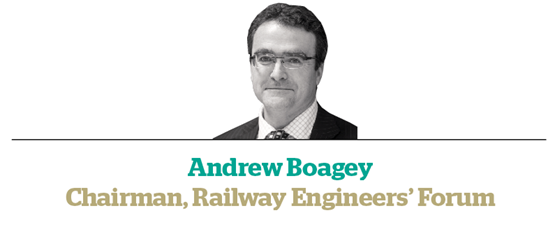
As an engineering student, I used to know what ‘efficiency’ meant. We had a formula. It was quite simple when
applied to engines or lamps. It could even be applied to power plants. It did not have any units, because it was just a ratio or a percentage - we simply divided the use we got out of something by the energy expended on it and the number was (hopefully) meaningful. But when you learn that a light bulb is around 2% efficient at producing light and around 98% efficient at heating a room, you do start to wonder at the value of the exercise.
Is this ever going to work for a complicated system such as a railway, or a capital investment programme? The answer has to be ‘yes’, or we will surely all end up in chaos. It must be true that, as they say: “If you cannot measure it, then you cannot manage it!”
But we do have to continually check our conclusions and use a basket of intelligent measures. In fact, some will surely be better described as measures of effectiveness, or cost, or waste, or output productivity, or safety.
Philip Haigh’s article helps us to appreciate the complexity and the pitfalls in this area. Take the line from Carlisle to Hexham - if we take a logical approach to the application of efficiency, as Philip has illustrated, we prove the need to reduce train service levels. We encourage passengers onto fewer trains. We improve the ratio between passenger-miles and track-miles. We reduce operating costs and we cut rolling stock numbers. And we end up with one train a day in each direction.
But wait a moment, that would not be a ‘railway service’ at all. It would simply be a ‘daily excursion’! In other words, it would not serve the purpose for which the line was built, and certainly would not provide an effective solution to the transport needs of the north of England, improving connectivity between Carlisle and Newcastle and supporting the objectives of the Northern Powerhouse.
When it comes to national infrastructure, and railways in particular, we have little choice but to use a balanced set of measures and to take a long-term view. Indeed, effectiveness is often more interesting than efficiency.
Philip also mentions the high-speed line from Paris to Lyon, which in 1981 was the first high-speed line to open in France. Because it was only running new high-speed passenger trains, its gradients could be steeper than conventional lines and its capacity was higher than a line with mixed services. The route was more than 80km (50 miles) shorter than the previous alternative, it was relatively cheap to build, had no tunnels and only 2km of viaducts.
The market for flights between these two cities collapsed, and the line saved thousands of tonnes of CO2 from entering the atmosphere via aircraft engines. The investment brought jobs to manufacturers and opened up a route to Marseilles, helping to create an economic area known as L’Arc Méditerranéen. And there is now only one timetabled train from Paris (Gare de Lyon) to the city of Lyon because the route itself now serves as a corridor for services from a range of French cities, relieving pressure on Paris termini in the process. That begins to sound like a pretty effective investment and a pretty diverse set of benefits.
But this is not to say we should not strive to capture indicators of efficiency for parts of the system. We should just accept that one set of figures is never going to capture the essential value of something that serves complex and varying needs, including relationships between fixed infrastructure, operations and maintenance.
Back before privatisation - in fact, before the internet and before the personal computer - British Rail developed a system for measuring output efficiency of track staff. It was way ahead of its time. The Computer-Assisted Maintenance Planning System (CAMPS) derived its logic from a veritable telephone directory of timed track-based tasks. Factors could be applied for various site conditions and circumstances. One member of each track gang had the task of completing the timesheets using a special propelling pencil, so that the figures could be optically recognised by the mainframe computer.
The system had merit but offered very little capacity for innovation, as any significant change to the status quo simply resulted in recalibration. There was no link to local investment in plant or more efficient equipment, and completing the forms was (quite literally) a full-time job. There was a revamp just before privatisation in 1994, but it eventually gave way to the incentives of the private sector. Then Railtrack failed, and Network Rail took the inspection and maintenance regime back in house, to re-start the painstaking work of improving the efficiency of an undeniably complex system.
The McNulty Review in 2011 challenged the industry by asking why our costs remain so high and levels of innovation remain so low, relative to safety-critical work in the aerospace industry. A look back at his ‘barriers to efficiency’ makes interesting reading - how many of these are valid today? “...the principal barriers are fragmentation of structures and interfaces, the ways in which roles of Government and industry have evolved, ineffective and misaligned incentives, a franchising system that does not encourage cost reduction sufficiently, management approaches that fall short of best practice in a number of areas that are cost drivers, and a railway culture which is not conducive to the partnership and continuous improvement approaches required for effective cost reduction”.
Harsh, perhaps! We are making progress in a number of these areas. And we are all part of an endless endeavour to improve and enhance our service for our public and freight customers. But we need to choose our indicators with care. It’s a complex system.
And we have to value defining what we are trying to achieve at least as much as we value measuring whether or not we are achieving it.

Philip’s wide-ranging discussion looks at the definition of efficiency from a number of different standpoints, and provides credible evidence that there is room for improvement across all aspects of the railway industry. With reference to the Thameslink project and the contribution from Simon Blanchflower, he highlights that efficient delivery of infrastructure projects is particularly relevant at this moment in time, and where it is generally recognised that there is room for improvement.
There were also echoes of the themes raised in RailReview’s interview with Sir Peter Hendy last year, particularly “the biggest mistakes have been when the railway has tried to do something which is not properly scoped, planned or costed”.
There is, it seems, an ever-present challenge of projects that are destined not to hit the ground running through ill-defined scope, poor knowledge of existing assets, unforeseen interfaces and a lack of buy-in by end users. Add in a shortage of experienced project management resource, and it is no wonder that the sums budgeted prove to be inadequate as they fail to allow for the inefficiencies already locked into the process in its early stages.
I have been lucky to be involved in the delivery of some exciting and complex multi-disciplinary projects in the rail sector, frequently with an operational interface. The best of those projects have had strong leadership, a desire to foster good working relationships at all levels and across all stakeholders, and a unity of purpose through clear consistent communication. Coupled with well-established competent stable resources in all the right places, including end-user representatives in the build phase, the foundations for success were laid.
On one of these projects, the client’s project director explained to me how he saw his key role as the enabler, working upstream of the designer and contractor teams to sort out scope, get stakeholder buy-in, agree an access strategy, and get budgets (including suitable contingency) approved. The project team was then empowered to deliver within its agreed remit. It wasn’t all plain sailing, and there were scope gaps, unforeseen interfaces and a few unexpected situations on the way, but because decisions were made and relationships were strong it was possible to work out the solutions and implement them.
I believe that the ability to make decisions quickly is an important factor in the efficient delivery of projects. Inevitably change occurs - even the best-planned projects can find unexpected circumstances to be dealt with. But integral to success is a governance regime that has empowered the project team to make the right decisions at the right time. The creation of an agile environment is vital for efficient use of the project resource.
Too often, decisions are taken away from the project for significant periods of time, and in the meantime the resources are not utilised effectively. This situation is also counter-productive in that it leads to frustration among teams who are no longer being focused on driving on a clear road ahead, but instead are waiting for the direction of the next tiny step forwards.
It is in the interest of any organisation operating in the rail sector to demonstrate efficient delivery, in order to maintain confidence in funding organisations that their money is being spent wisely and to best effect.
In my recent experience, efficient and effective delivery has a direct correlation with the effectiveness of the working relationship between the design, construction and client teams - in particular, how much those teams have invested in three key areas: getting to know and understand the project; establishing a clear scope, specification and interfaces; and getting the buy-in of key stakeholders including the end-user. I concur with Philip’s conclusion: we still have some way to go.

The maintenance, renewal and upgrade of the underlying railway infrastructure is a significant area of expenditure, and the way this is carried out clearly has a large influence on what users pay.
The earlier part of Philip’s article describes how intensively the UK’s rail service is operated, and how this has the consequence of severely limiting the available time to carry out infrastructure work efficiently. We are always told that booked services must run and that passengers and freight users will go elsewhere if there is any significant decline in the rail service, but is this true?
In most areas of life, there are times when you cannot use assets continuously. Take an example from everyday life, such as decorating your lounge. You could do this by creeping in every night and doing a little bit of preparation or repainting - you could even say that there should be no noise made, no dust left and no smell of paint. Alternatively you can decamp to the kitchen, cover your furniture with dust sheets and get the work done. If you were paying people to do the work you would never dream of choosing the first option - and I don’t suppose many DIYers would either.
Similarly, motorways are upgraded by reducing speeds, narrowing lanes and creating safer environments for work to be carried out in the closed-off space - the M1 between Junctions 15 & 19 seems to have been in this state for most of my lifetime! Generally the roadworks are lifted for major holiday periods - the opposite of the railways, where Bank Holidays are one of the few times we get decent access.
It is interesting to see the references to Simon Blanchflower’s Thameslink project, which has largely been progressed efficiently via larger blockades and closures of sections of the route. I live near the Thameslink line, and as a regular user I can vouch for how well the closures have been communicated to passengers, and how the need for this has largely been accepted. The exception seems to be at London Bridge, where Southeastern users were not (initially), so well-informed. Another aspect of Thameslink’s success was the communication of the end benefits resulting from the scheme. South West Trains is also taking this approach with planned works at Waterloo, scheduled for August.
Also affecting how efficiently we can carry out our work is the lack of knowledge about (and underlying poor condition of) the railway infrastructure, coupled with a reluctance to adopt innovation. These issues are improving, but tend to be amplified by the lack of access - if you are using more old-fashioned technology in short-access windows, finding underlying faults in the historic infrastructure can be more disruptive than in a greenfield environment.
So for those of us working on the infrastructure it’s the lack of reasonable access that prevents us being more efficient. We have a highly trained workforce, trained to work safely and effectively, and unsurprisingly these people expect to make a career of working on the railway and earn regular pay. Major upgrades will require improved access if we are to deliver them efficiently. The Thameslink programme demonstrated how to achieve this without upsetting the customer.

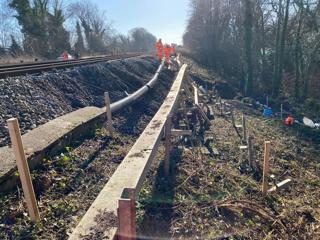
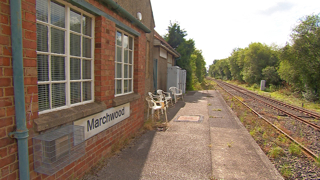
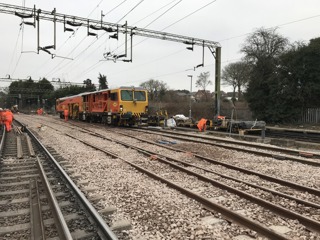
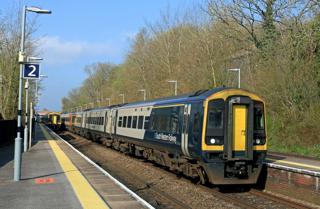
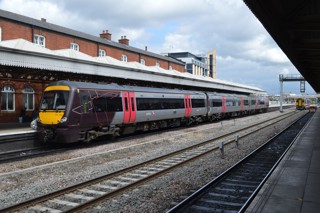

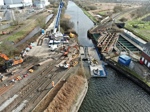









Login to comment
Comments
No comments have been made yet.